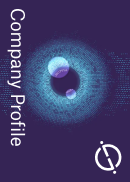South Korea-based Seegene has developed the QuantPlex RV-16 Assay for quantification of 21 respiratory viral pathogens associated with respiratory diseases.
The multiplex quantification assay will enable physicians to develop personalised medicine regimens for patients by providing the specific information needed to guide patient treatment decisions.
Seegene founder, CTO and CEO, Jong-Yoon Chun, said the multiplex quantification of viral load by PCR will facilitate a better understanding of viral pathogenesis and will provide information to allow true patient-specific personalised care.
"Moreover, respiratory viral load quantification contributes to the rapidly growing field of diagnostic molecular virology, as well as advances the interpretation of real-time PCR results in various clinical contexts," Chun added.
"Using these types of tests, clinicians will be able to expand the questions that can be asked about a patient’s illness, thereby enhancing the physician’s ability to provide accurate and data-driven decisions for patients."
The QuantPlex RV-16 Assay leverages a multiplexed molecular PCR format to quantify multiple targets.
How well do you really know your competitors?
Access the most comprehensive Company Profiles on the market, powered by GlobalData. Save hours of research. Gain competitive edge.

Thank you!
Your download email will arrive shortly
Not ready to buy yet? Download a free sample
We are confident about the unique quality of our Company Profiles. However, we want you to make the most beneficial decision for your business, so we offer a free sample that you can download by submitting the below form
By GlobalDataThe technology can detect, differentiate and provide quantitative information for adenovirus; influenza A and B; parainfluenza virus types 1, 2, 3 and 4; rhinovirus types A, B and C; respiratory syncytial viruses A and B; bocavirus 1, 2, 3 and 4; metapneumovirus; coronavirus types 229E, NL63 and OC43; and enterovirus from a single sample, according to the company.
The assay is based on Seegene’s proprietary TOCE-CCMTA technology, a high, multiplex, quantitative PCR technology.
TOCE-CCMTA technology enables the simultaneous detection, differentiation and quantification of up to 20 analytes on an existing four-colour instrument.







